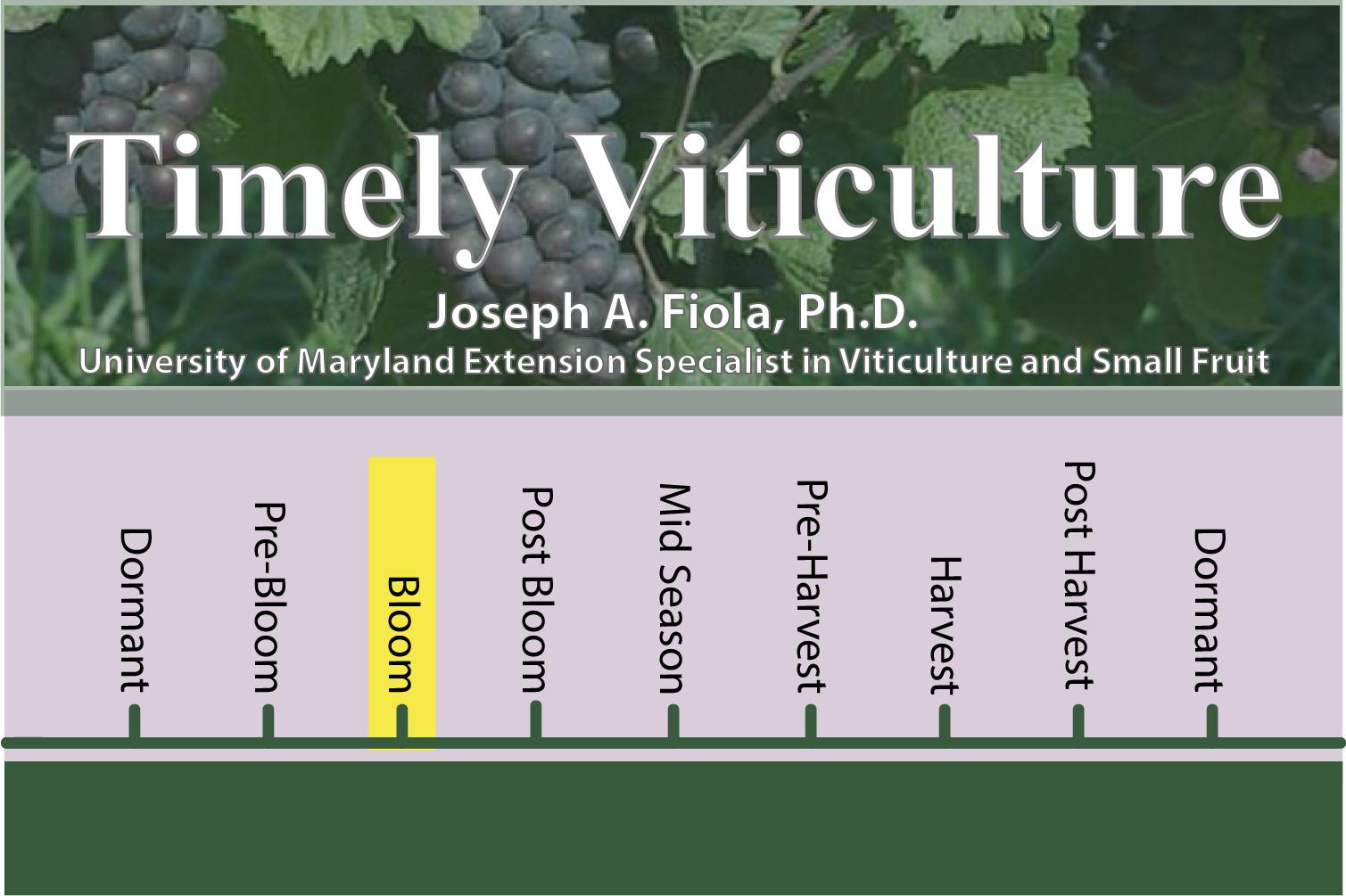Tissue Sampling
Some early cultivars in many vineyards are just starting to bloom. This is a critical time for taking tissue/petiole samples to assess the nutritional status of your vines. Remember all vineyards with income of >$2500 per year MUST have an approved nutrient management plan and MDA conducts regular monitoring to be sure you are in compliance. Recent analyzed tissue samples are at the core of the plan. The following are some timely considerations.
- Grape tissue (petiole) analysis is recommended along with soil samples and visual observations as part of a complete nutrient management program.
- Tissue samples are needed when developing your mandatory Maryland Agricultural Nutrient Management Plan. (Please see link at the end of the publication for details). Tissue analyses reveal the actual amount of nutrients in the vines.
- Soil samples are needed when developing your plan and will reveal the amount of nutrients available to the vine. Soil tests are also important for monitoring and adjusting soil pH.
- Nitrogen status is best evaluated with tissue sampling, not through soil sampling.
- Spring/bloom tissue sampling is recommended. The best time to take spring tissue samples is during full bloom of a particular variety.
- Bloom time samples show more accurate levels of boron and zinc but are less accurate indicators of potassium status.
- With bloom samples, there is adequate time to make nutrient adjustments to the vineyard that may influence this year’s crop quality.
- Where bloom-time analyses indicate borderline potassium nutrient levels, a second sampling is warranted in late summer (70-100 days post-bloom).
- A three-year cycle of sampling all of the cultivars in a vineyard is typically recommended.
- Some specifics on sampling:
- Sample different cultivars and rootstocks separately.
- Samples should represent vines that are of the same age.
- Each sample should include less than 5 acres of vines.
- Separate samples should be taken to reflect major changes in soil or topography.
- Vines should represent that portion of a block that is maintained under the same cultural practices, i.e. fertilizer, irrigation, and vigor control practices. For example, irrigated blocks should not be combined with non-irrigated blocks.
- Do not sample vines on the border of the block or near dusty roads.
- For the bloom sampling period, sample the petiole (the stem connecting the leaf blade to the shoot) of the leaf OPPOSITE of the 1st blossom/cluster (see figure 1. below and details on fact sheet linked below).
- About 50-75 petioles are needed from cultivars with large petioles and about 75-100 petioles are needed from cultivars with small petioles.
- Gently wash petioles with water and gentle detergent, pat dry, and place in an OPEN paper bag (lunch, #6 size) to dry for a few days.
- Residual pesticides or foliar fertilizers on petioles may skew results.

Figure 1
- Residual pesticides or foliar fertilizers on petioles may skew results.
- There are many labs that can analyze tissue samples. Please see a list of labs by using the link provided below. Call the laboratory to determine current pricing and submission information.
- For more details on tissue sampling, please see
Timely Viticulture is designed to give those in the Maryland grape industry a timely reminder on procedures or topics they should be considering in the vineyard.
